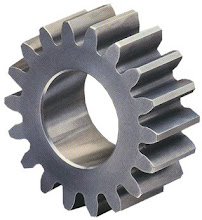How Manual Transmissions Work
Inside this Article
If you drive a stick-shift car, then you may have several questions floating in your head:
- How does the funny "H" pattern that I am moving this shift knob through have any relation to the gears inside the transmission? What is moving inside the transmission when I move the shifter?
- When I mess up and hear that horrible grinding sound, what is actually grinding?
- What would happen if I were to accidentally shift into reverse while I am speeding down the freeway? Would the entire transmission explode?
In this article, we'll answer all of these questions and more as we explore the interior of a manual transmission.
Cars need transmissions because of the physics of the gasoline engine. First, any engine has a redline -- a maximum rpm value above which the engine cannot go without exploding. Second, if you have read How Horsepower Works, then you know that engines have narrow rpm ranges where horsepower and torque are at their maximum. For example, an engine might produce its maximum horsepower at 5,500 rpm. The transmission allows the gear ratio between the engine and the drive wheels to change as the car speeds up and slows down. You shift gears so the engine can stay below the redline and near the rpm band of its best performance.
 Photo courtesy DaimlerChrysler Mercedes-Benz Actros, manual transmission |
Ideally, the transmission would be so flexible in its ratios that the engine could always run at its single, best-performance rpm value. That is the idea behind the continuously variable transmission (CVT).
A CVT has a nearly infinite range of gear ratios. In the past, CVTs could not compete with four-speed and five-speed transmissions in terms of cost, size and reliability, so you didn't see them in production automobiles. These days, improvements in design have made CVTs more common. The Toyota Prius is a hybrid car that uses a CVT.
 |
The transmission is connected to the engine through the clutch. The input shaft of the transmission therefore turns at the same rpm as the engine.
 Photo courtesy DaimlerChrysler Mercedes-Benz C-class sport coupe, six-speed manual transmission, graphic illustration |
A five-speed transmission applies one of five different gear ratios to the input shaft to produce a different rpm value at the output shaft. Here are some typical gear ratios:
with Engine at 3,000 rpm | ||
| 1st | 2.315:1 | |
| 2nd | 1.568:1 | |
| 3rd | 1.195:1 | |
| 4th | 1.000:1 | |
| 5th | 0.915:1 |
You can read How CVTs Work for even more information on how continuously variable transmissions work. Now let's look at a simple transmission.


Tidak ada komentar:
Posting Komentar